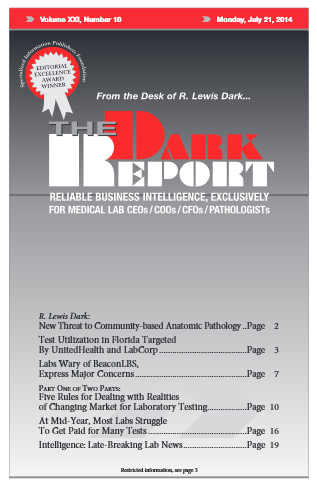CEO SUMMARY: At a recent coding and billing conference, pathology and lab clients of one of the nation’s largest revenue management companies agreed that three trends have caused lower revenues since the start of 2014. One trend seen by labs involves higher deductibles and copayments from patients. Another is the exclusion of local labs from …
At Mid-Year, Labs Struggle to Get Paid for Many Tests Read More »
To access this post, you must purchase The Dark Report.


